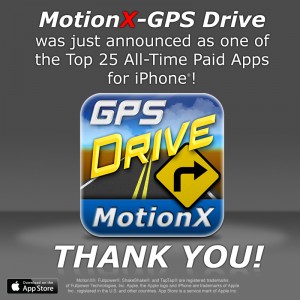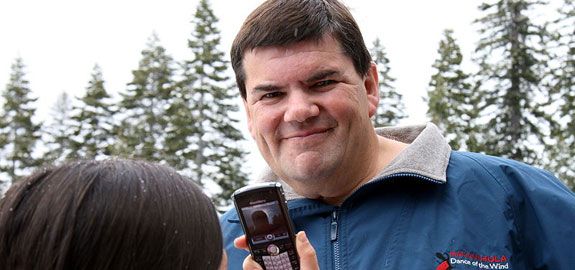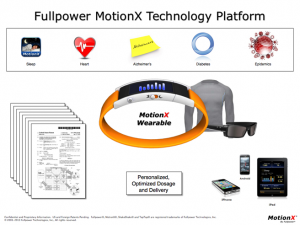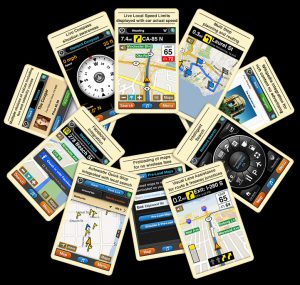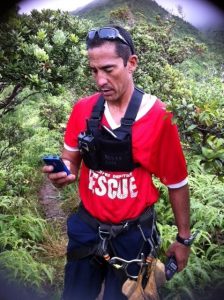Cómo se creó la primera cámara para teléfonos celulares (En Español)
Entrevistamos al francés Philippe Kahn, que cuenta los detalles del prototipo que en 1997 le permitió compartir la foto digital del nacimiento de su hija y los desafíos que enfrentó la tecnología para posicionarse en la industria móvil
Por Guillermo Tomoyose | LA NACION
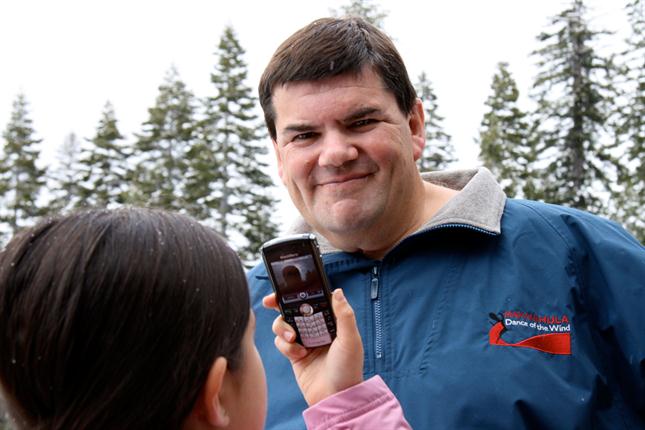
Philippe Kahn bajo la lente del teléfono de su hija Sophie, nueve años luego de ser retratada por la primera cámara para un celular. Foto: Gentileza Philippe Kahn
En las cuatro décadas de vida del celular, existe una prestación que, más allá de los adelantos que experimentaron los diferentes modelos lanzados en la última década, está presente en la demanda de los usuarios: la cámara de fotos. No importan tanto las limitaciones técnicas: el uso de la lente de los teléfonos móviles predominó por encima de los modelos digitales compactos y semiprofesionales por la facilidad de apuntar, disparar y compartir de forma instantánea una imagen. Y porque es una cámara que siempre se lleva en el bolsillo.
Desde los sucesos de la primavera árabe, los improvisados paparazzis digitales de la vía pública y hasta eventos masivos, con la foto de la asunción del papa Francisco con miles de celulares en alto como muestra de la preferencia de los teléfonos con cámara por sobre otros equipos, esa premisa fue el aliado perfecto para el crecimiento explosivo y la consolidación de servicios como Flickr , Facebook, Twitter e Instagram , entre tantos otros.
Y también lo fue para Philippe Kahn hace más de 16 años, cuando en 1997 este ejecutivo y emprendedor francés decidió crear una cámara de fotos que se comportara de esta forma. Utilizó la óptica de una cámara Casio QV-10, un teléfono Motorola Star Tac y desarrolló el software adecuado para compartir con sus amigos, mediante un mensaje de correo electrónico, la primera foto digital de su hija.
“La visión que tenía en aquel momento era crear una cámara para un teléfono celular que combinara la modalidad apuntar, disparar y compartir de forma instantánea”. Eso es lo que en la actualidad podemos ver en un smartphone en combinación con diversas plataformas sociales, como Flickr, Google o Facebook”, cuenta Kahn, al ser consultado por LA NACION.
“La clave del despegue de esta tecnología fue el despliegue de las redes móviles inalámbricas”, agregó este emprendedor francés, que fue CEO de Borland, una de las rivales de Microsoft durante las décadas del 80 y mediados de los 90, hasta que decidió mudarse a San Francisco, Estados Unidos.
Su trayectoria también estuvo marcada por otro hito en el mundo tecnológico: en 1973 fue el programador de Micral , la primera computadora producida de forma comercial (y no mediante kits de armado) basado en un microprocesador Intel, el modelo 8008. Incluso se anticipó a la mítica Altair, el equipo que marcó el inicio de Microsoft en el mundo del desarrollo de software.
Conocida por haber sido la primera persona retratada por la lente de un “camera-phone” , como prefiere denominar Kahn a estos teléfonos móviles, años más tarde su hija invirtió los roles y le hizo un retrato a su padre con la lente de un celular , ese pionero de la fotografía digital que tiene un iPhone como su equipo de uso diario.
El lento despegue de la cámara del celular
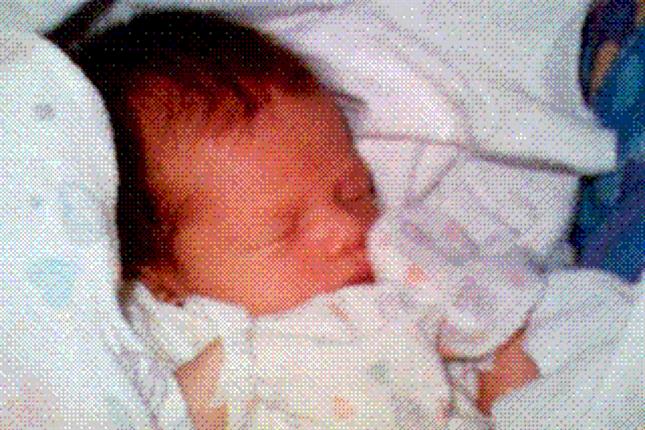
Sophie, la hija de Philippe Kahn, fue la protagonista de la primera foto tomada por la cámara de un teléfono celular en 1997. Foto: Gentileza Philippe Kahn
En una primera etapa, Motorola trabajó con LightSurf, una de las compañías que fundó Kahn, para desarrollar un teléfono celular con cámara, pero el proyecto se canceló en 2001.
A pesar de estas investigaciones, los primeros modelos no surgieron en Estados Unidos, sino en el mercado asiático. “En 1997 el escenario móvil no estaba listo para esta propuesta. Mi primer cliente vino de Japón con la compañía J-phone en 1999, con el servicio ShaMail (Picture Mail, la traducción en inglés) junto a un teléfono Sharp equipado con una cámara. Motorola llegó al mercado con su propia propuesta mucho más tarde”, dijo Kahn.
El crecimiento de esta tecnología en el mercado asiático tiene sus motivos, con firmas como Samsung y Sharp que se disputan la creación del primer teléfono con cámara, una función que hoy en día se encuentra presente tanto en los smartphones de última generación como en los modelos más modestos. De hecho, la red de NTT DoCoMo de Japón fue una de las primeras plataformas en ofrecer Internet móvil en 1999.
En este punto, Kahn cree que en un futuro la clave de la evolución de este matrimonio entre el teléfono móvil y una cámara no reside en la cantidad de megapixeles de una foto, sino en un mayor ancho de banda, el ingrediente clave para que el fenómero de las fotografías digitales lograra su impacto más allá de los mercados orientales. “La cámara del celular es una combinación de una infraestructura para compartir de forma instantánea las fotos y un sensor integrado al equipo. Eso es lo que a un usuario de cualquier parte del mundo le importa”.
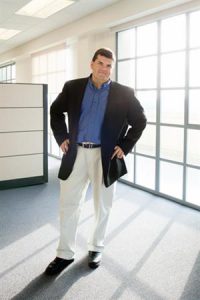
Programador de una de las primeras computadoras comerciales y ex-CEO de Borland, Kahn ahora se encuentra abocado en el desarrollo de sensores biométricos no invasivos. Foto: Gentileza Philippe Kahn
Esa modalidad, que Kahn vislumbró hace más de quince años, comenzó a ser visible en Flickr, que tiene a la línea de teléfonos iPhone entre los tres dispositivos más populares en la plataforma de Yahoo! . Y el fenómeno no quedó allí, con iniciativas como Instagram, que ya cuenta con 100 millones de usuarios y que fue adquirida por Facebook en 1000 millones de dólares. La compañía cofundada por Mark Zuckerberg explota al máximo esa unión entre el componente social y la publicación de fotografías, con más de 300 millones de imágenes subidas de forma diaria a su plataforma.
“¡Es fabuloso que el ecosistema de los teléfonos con cámara esté creciendo de esta forma!”, dijo Kahn sobre esta tendencia.
El trabajo de este ex-CEO de Borland, que fue a Estados Unidos para poner a prueba el prototipo de celular con cámara, ahora se encuentra con una iniciativa diferente, pero que se mantiene dentro del mundo móvil: los sensores biométricos no invasivos que interactúan con los teléfonos inteligentes.
Desde su compañía FullPower , Kahn cuenta con la tecnología MotionX, empleada en la aplicación Nike+ Running , utilizada por los aficionados al entrenamiento físico, y también adoptada por Jawbone , la empresa que lanzó al mercado la pulsera UP para la medición de signos vitales, cuyos datos registrados luego son transferidos de forma inalámbrica a un smartphone para procesar los parámetros y llevar un control diario de las comidas, actividades físicas y de sueño.
“Esta tecnología permitirá que las personas puedan mejorar su calidad de vida, mejorar su sueño y tener más actividad física con pequeños cambios en la conducta diaria”, dijo este pionero francés del mundo tecnológico, que sigue sin alejarse de los sensores y de los teléfonos inteligentes y que fue uno de los rostros de la campaña de Best Buy en el anuncio del SuperBowl el pasado año.
Philippe Kahn en el anuncio del SuperBowl (en inglés)
